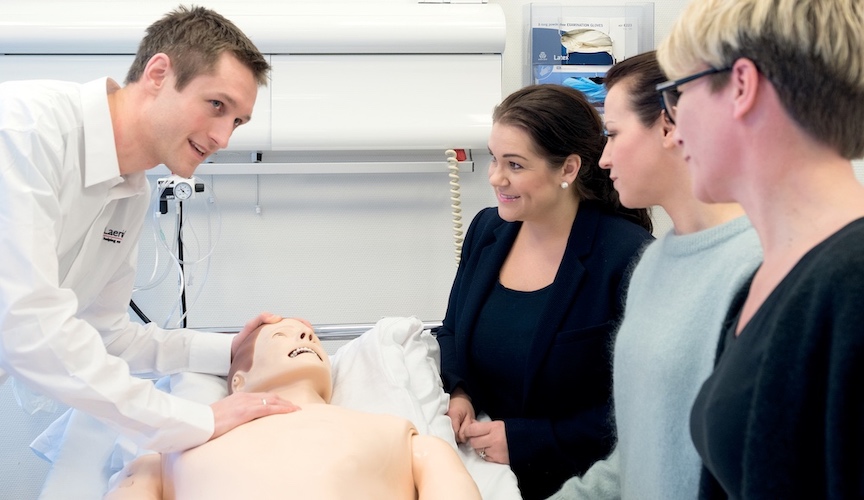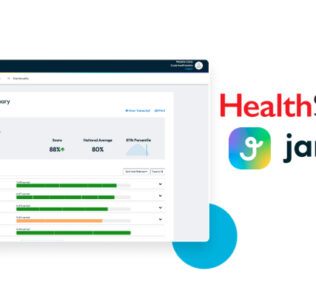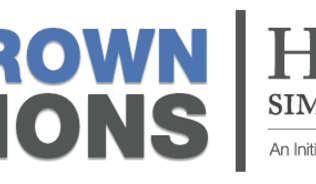3 Sim Problems You Can Solve Through Professional Development, with Downloadable Tool
Nursing schools continue to implement high-fidelity simulation as a learning methodology to better support curriculum objectives. In doing so, many turn to industry best practices from the International Nursing Association for Clinical Simulation and Learning (INACSL) and the National Council of State Boards of Nursing (NCSBN). Even with the help of these resources, there are often still looming questions. Today we consider professional development risk assessments, with some key areas to consider and a downloadable form from Laerdal Medical.
Despite a need for additional training and guidance, investments in faculty development are often underfunded and neglected. Only a small percentage of current faculty have received the kind of formal simulation training that helps to address knowledge gaps and improve the learner experience.
Continual and standardized competency development is critical to the success of your simulation program. It can help in the following ways:
Sponsored Content:
1. Address Turnover
Turnover is a concern for all organizations and it can be particularly worrisome in specialized fields like simulation. In a simulation lab, turnover means losing a wealth of knowledge in scenario design, troubleshooting, and facilitation. And, finding a replacement with the same experience is not likely.
By making professional development a priority, an organization can keep employees productive and efficient. An investment in retaining employees begins from the moment they begin the job. Our experience is that orientation should include training that introduces new employees to the world of simulation, beginning with basics. And, providing ongoing “refresher” courses to faculty and staff will keep that information fresh in their brains.
Consistent opportunities for training can improve an employee’s quality of work – and reignite his or her commitment to organizational goals. Research shows that employees who are engaged and thriving are 59% less likely to look for a job elsewhere. Retaining employees can be as simple as prioritizing their development.
Sponsored Content:
2. Standardize Training
Each team member in a simulation lab has a unique grasp on simulation. And, as with any working relationship, they are likely to trade what they know on-the-fly. This creates great communication among faculty and staff but can often lead to inconsistencies in training. Not everyone is on the same page.
Formal training courses led by a professional can ensure that all faculty and staff have the same information available to them. The trainer can also include industry best practices and tips from other organizations in the material.
With all members of the team unified and equally-informed, learners stand to benefit the most. The instructors and facilitators are the most important variable affecting student outcomes. When faculty and staff are unified in their approach and equipped with the same level of expertise, simulations can run smoothly and successfully every single time.
3. Improve Agility
Even when a curriculum is created, it is never truly finalized. Throughout any given semester, a specific healthcare concern may reach an urgency that requires a curricular adjustment. An organization may decide to incorporate a training specific to a certain assessment, diagnosis and treatment path. In this case, an instructor is expected to have a certain amount of agility.
Writing and designing a simulation scenario is not a simple task. The ability to plan a simulation from start-to-finish can be overwhelming – unless faculty know how to set measurable learning objectives, use design software, and facilitate meaningful debrief. These skills are the result of time and consistent training.
Professional development can give nursing schools the boost they need to meet core educational goals as well as address current public health concerns.
Further Reading and Downloadable Assessment Tool
As nursing simulation usage continues to grow in nursing schools, the need to stay current on simulation technology and pedagogy becomes even more important.
Each organization is going to vary in their need for competency development programs. To determine what would fit your specific needs, start with a basic assessment of personnel in your simulation lab. Visit Laerdal’s website through the link below for a downloadable resource to help you get started, which will
Read Full Article and Download the Risk Assessment on Laerdal’s Website!
Sponsored Content:




















